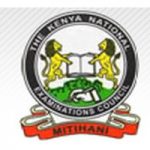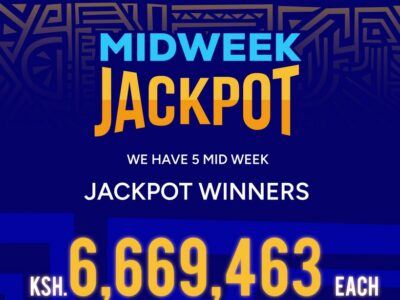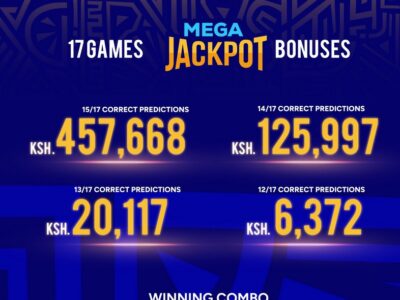
If you want to transfer from diploma to degree level in Kenya,there are qualifications to meet.Creadit transfer requirements are as follows:
- The performance of the student is documented by institutional/national grade. The KCATs grading scale ranks the students on a statistical basis. Therefore, statistical data on student performance is a prerequisite for applying the KCATS grading system. Grades are assigned among students with a pass grade as follows:
| Marks | Grade | GPA |
| a. 70% and above | A | 4 |
| b. 60-69% | B | 3 |
| c. 50-59% | C | 2 |
| d. 40-49 % | D | 1 |
| e. Less than 40 | Fail |
- Degrees and Diplomas will be classified as follows;
The degrees and Diplomas shall be classified as follows, using the overall average mark
| Average Mark | Degree Classification | Diploma/Cert Classification |
| 70% and above | First Class Honours | Distinction |
| 60% – below 70% Second Class (Upper D) | Upper Credit | |
| 50% – below 60% Second Class (Lower D) | Lower Credit | |
| 40% – below 50% | Pass | Pass |
| Below 40% Fail |
11. 0 Requirements for Credit Transfer;
- No credit shall be transferred for core courses of a program;
- No more than 49% of credits shall be transferred from one level to another;
- Credits shall only be transferred from courses that were taken within the last four years;
- Students who get an average of a distinction at certificate level (or took a certificate program that lasted for two years or more); shall be allowed to join Diploma programs at year two (if credits transferred are not more than 49% of the Diploma program); All other students will join Diploma programs at year one;
- Students who took a Diploma program that lasted for three years or more shall be allowed to join Degree programs at year three, if they get a Credit and above (if credits transferred are not more than 49% of the Degree program enrolled in); Those getting lower than a credit shall enroll in year 2 of the Degree program;
- Students who get an average of a Credit at two-year Diploma programs shall be allowed to join Degree programs at year two (if credits transferred are not more than 49% of the Degree program enrolled in); All other two-year Diploma students will join Degree programs at year one;
- Students who have taken more than two semesters of study for a Bachelor’s degree at one university can transfer all credits to a related bachelor’s degree at another university;
- Students who have taken more than two semesters of study for a master’s degree at one university can transfer all credits to a related (see KNQF organizing fields for guidance) master’s degree at another university; subject to an acceptable status report from his/her previous supervisors and approval by the receiving university’s graduate school;
- Students who have taken more than two semesters of study for a doctoral degree at one university can transfer all credits to a related (see KNQF organizing fields for guidance) doctoral degree at another university; subject to an acceptable status report from his/her previous supervisors and approval by the receiving university’s graduate school;
15. Program classification
The table below shows the classification table that will be used to equate related programs at different universities. Stakeholders in each program discipline will strive to map all the recognized certificates, Diplomas and Degrees in the discipline and create a suitable detailed CATs, procedures for application and related matters. The CATs once developed will be Approved by the KNQA for use by all training institutions that apply to join and use the program for specified programs/qualifications.
| PROGRAMMES GROUPS | |
| 1. | Law & Related |
| 2. | Business & Related |
| 3. | Arts & Related |
| 4. | GeoScience & Related |
| 5. | Special Education |
| 6. | Kiswahili & Related |
| 7. | Engineering, Technology & Related |
| 8. | Architecture, Design, Planning & Related |
| 9. | Computing, IT & Related |
| 10. | Agribusiness & Related |
| 11. | Science & Related |
| 12. | Mathematics, Economics & Related |
| 13. | Design, Textiles & Related |
| 14. | Sports, Physical Education & Related |
| 15. | Medicine, Nursing, Health & Related |
| 16. | History & Related |
| 17. | Agriculture, Food Science, Environment & Related |
| 18. | Geography, Natural Resources Management & Related |
| 19. | French & Related |
| 20. | German & Related |
| 21. | Music & Related |
| 22. | Education Science & Education Arts |
| 23. | Religious Studies & Related |
16.0 Who Can Participate
All Institutions awarding qualifications can apply to use the KCATs and specify programs that they want to enlist in the system. Institutions will be required to pay a fee of ksh 10,000 per instution and ksh 5,000 per program to participate in the system for a 4-year period; that can be renewed on request. KNQA is working with the Kenya Universities and Colleges Central Placements services (KUCCPS) to use programs enlisted in the system to admit students.
17.0 What are the key documents of KCATs?
- The registered institutions in the system shall produce and distribute a catalogue of programs registered in the KCATs system and requirements for enrollment and participation;
- Each Institution shall produce a Learning Agreement that contains the list of courses to be taken; and agreed upon by the student and the institution concerned. The Learning Agreement must be agreed upon by the student and the two institutions concerned before the student’s departure and to be updated immediately when changes occur;
- The Transcript of performance of a student which shows the list of courses taken, the credits gained and possibly KCATs grades awarded. In case of credit transfer, the Transcript of Records must be issued by the home institution for outgoing students before departure and by the host institution for incoming students at the end of their period of study.
18.0 How to obtain the KCATs Label?
- An KCATs label will be awarded to institutions, which apply KCATs in the proper way in all their programmes. The label will raise the profile of the institution as a transparent and reliable partner in Kenya and the region.
- The criteria for the label will be: A Course Catalogue (online or hard copy) in English (for programmes taught in English), use of KCATs credits, samples of learning Agreements and Transcripts of Records.
- An application form allowing students to participate in KCATs will be published on the web site of the Kenya National Qualifications Authority (KNQA).
- The label will be valid for four academic years, starting 2019/2020. The list of institutions in possession of the label will be published on the KNQA web site.













